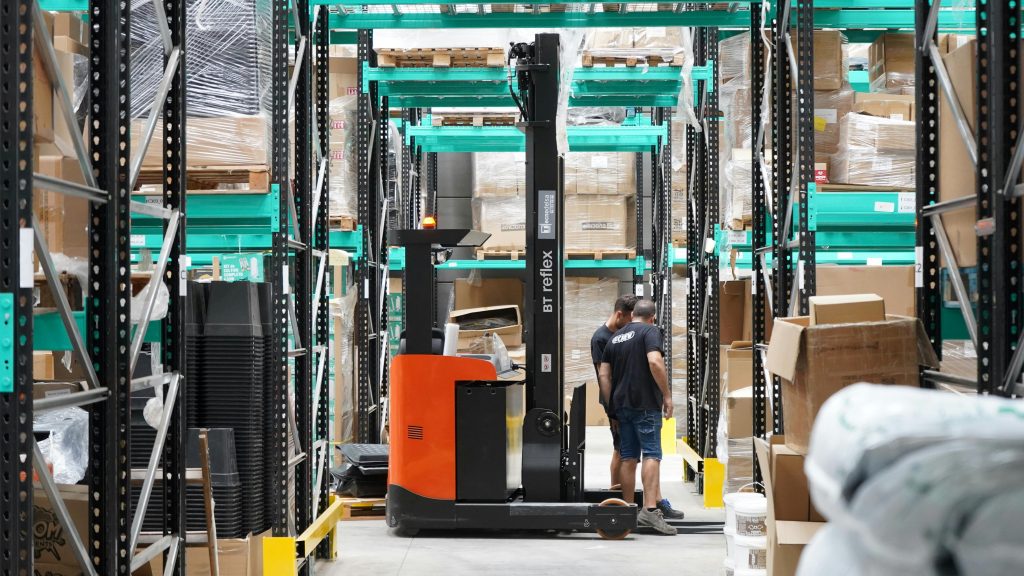Introduction
In today’s fast-moving logistics landscape, third-party logistics (3PL) providers must be agile, efficient, and scalable. One of the most powerful ways they do this? Multi-client capabilities. This model allows 3PLs to manage supply chain operations for multiple clients within shared facilities, systems, and resources.
While some businesses may initially consider dedicated logistics solutions, multi-client setups offer advantages that go far beyond cost savings. From operational flexibility and scalability to tech-driven efficiency, multi-client 3PLs are transforming how companies—from startups to enterprises—manage inventory, fulfillment, and customer satisfaction.
In this post, we’ll explore the key benefits of 3PL multi-client capabilities and why businesses looking to grow, adapt, and optimize their supply chains should take notice.
What Is a Multi-Client 3PL Model?
Before diving into the benefits, let’s define it.
A multi-client 3PL (also called a shared-user warehouse model) refers to a logistics setup where multiple companies share:

- Warehousing space
- Labor and equipment
- Transportation networks
- Technology platforms
Each client still maintains distinct inventory, branding, and operational preferences, but benefits from pooled resources.
Core Benefits of 3PL Multi-Client Capabilities
1. Cost Efficiency Through Shared Resources
One of the most immediate and tangible benefits is cost savings. Multi-client facilities allow businesses to:
- Avoid high fixed costs of dedicated warehousing
- Share labor, equipment, and utilities
- Pay for only the space and services they use
Example:
If your peak season is November–December, a multi-client setup lets you scale labor and space temporarily—without year-round overhead.
2. Scalability That Grows With You
Whether you’re a DTC startup or an established B2B supplier, your logistics needs change. Multi-client 3PLs offer:
- Flexible racking and storage based on volume fluctuations
- Rapid onboarding of SKUs or product lines
- Ability to expand into multiple regions without new facility leases
Real-Life Analogy:
Think of it like a co-working space for inventory—start small, then scale up or down based on demand.
3. Operational Agility and Speed
Today’s customers expect fast, flawless delivery. Multi-client 3PLs:
- Optimize pick-pack-ship processes across clients
- Reroute resources based on daily volume needs
- Offer batch shipping and zone skipping via shared transportation networks
This leads to faster fulfillment times, especially during unexpected demand spikes.
4. Access to Advanced Technology and Automation
Top-tier multi-client 3PLs invest in:
- Warehouse Management Systems (WMS)
- Inventory tracking and real-time dashboards
- Robotics and conveyor systems
- EDI/API integrations with marketplaces, ERPs, and retailers
Rather than building tech infrastructure from scratch, clients benefit from plug-and-play access to enterprise-level tools.
5. Risk Mitigation and Business Continuity
When disruptions strike—labor shortages, weather delays, equipment breakdowns—multi-client 3PLs can shift resources across accounts to avoid bottlenecks.

Additional Perks:
- Backup fulfillment zones
- Redundant shipping lanes
- Pre-negotiated carrier contracts
This reduces single-point-of-failure risks, especially compared to in-house or single-client warehouses.
6. Geographic Reach and Market Expansion
Multi-client 3PLs often operate networks of shared warehouses in strategic locations. This allows:
- 2-day or next-day shipping across wider territories
- Distributed inventory placement (e.g., East/West Coast)
- Lower last-mile delivery costs
Ideal for businesses expanding into new markets without setting up local operations.
7. Continuous Process Improvement and Benchmarking
With multiple clients under one roof, 3PLs can analyze performance metrics across industries and products to:
- Identify bottlenecks
- Share best practices
- Apply learnings to optimize your operations
This level of insight is difficult to replicate in a dedicated, siloed setup.
8. Sustainability and Space Efficiency
Multi-client models are naturally greener:
- Higher facility utilization = lower energy waste
- Fewer idle trucks and less deadheading
- Shared packaging and recycling programs
For brands aiming to meet sustainability goals, this is a logistical and ethical win.
Who Should Consider a Multi-Client 3PL?
Multi-client logistics isn’t one-size-fits-all. It’s ideal for:
| Business Type | Reason to Consider Multi-Client 3PL |
|---|---|
| SMBs and Startups | Low barrier to entry, pay-as-you-grow model |
| Seasonal Brands | Ability to scale space and labor with seasonal peaks |
| Ecommerce Companies | Fast, cost-efficient fulfillment with tech integrations |
| Retail Vendors | EDI compliance, pallet shipping, store-ready services |
| International Entrants | Quick access to U.S. logistics infrastructure |
| Diverse Product Portfolios | Flexible SKU handling and storage configurations |
Challenges to
der (and How to Solve Them)
1. Loss of Control
- Concern: Sharing a facility means less control over layout and processes.
- Solution: Choose a 3PL with customizable SOPs, dedicated account managers, and robust client reporting.

2. Data Privacy
- Concern: Multiple clients using the same system could lead to data leakage.
- Solution: Top 3PLs offer client-specific logins, encrypted systems, and audit trails.
3. Service Prioritization
- Concern: Will larger clients receive better service?
- Solution: Discuss SLAs (Service Level Agreements) upfront, and ensure expectations are contractually defined.
How to Evaluate a Multi-Client 3PL Partner
When selecting a provider, look for:
- Proven experience in your industry or product type
- Transparent pricing models (by pallet, order, SKU, etc.)
- Advanced WMS and integrations (Shopify, NetSuite, Amazon, etc.)
- Flexible contract terms
- Client references and case studies
Bonus tip: Ask about peak season planning, service level KPIs, and how they handle client transitions.
Conclusion
Multi-client capabilities are redefining the 3PL landscape, offering businesses a strategic advantage through flexibility, efficiency, and innovation. By leveraging shared resources, cutting-edge technology, and scalable processes, companies can focus on growth while trusting their logistics to experienced partners.
Whether you’re scaling up or streamlining, exploring a multi-client 3PL model may be the smartest move for your business—and your bottom line.
